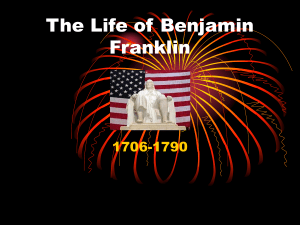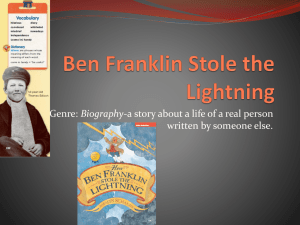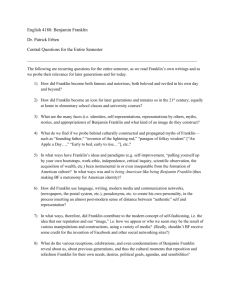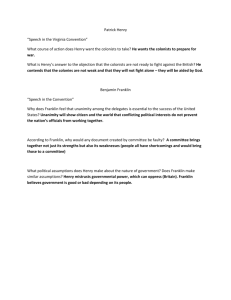Benjamin Franklin inventions
advertisement
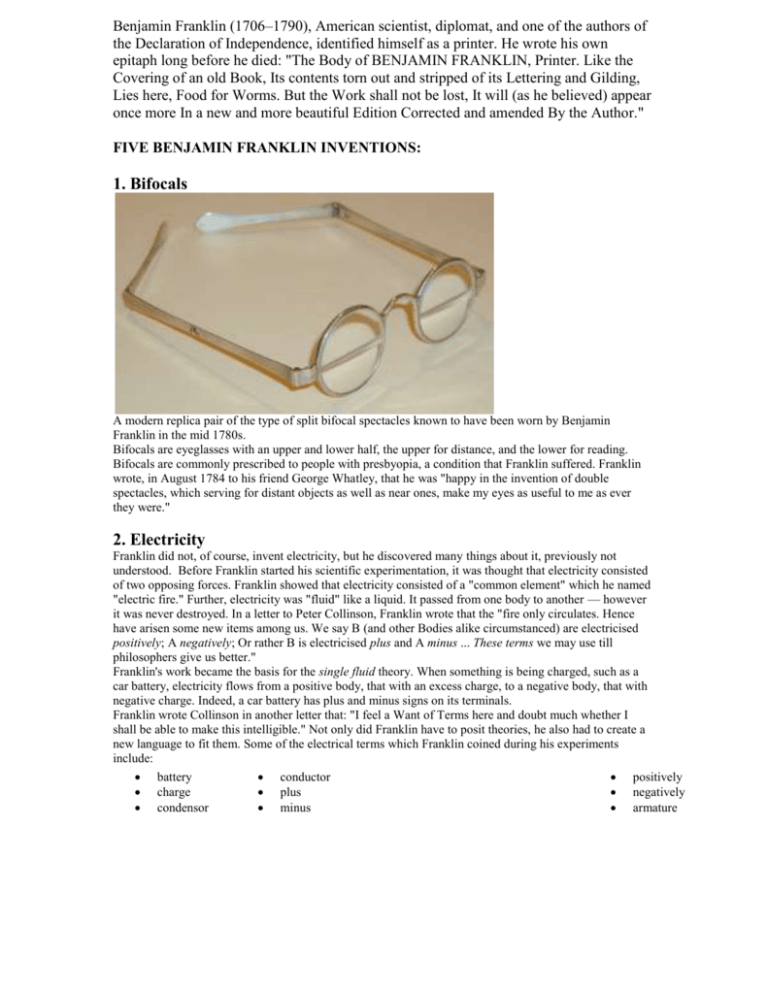
Benjamin Franklin (1706–1790), American scientist, diplomat, and one of the authors of the Declaration of Independence, identified himself as a printer. He wrote his own epitaph long before he died: "The Body of BENJAMIN FRANKLIN, Printer. Like the Covering of an old Book, Its contents torn out and stripped of its Lettering and Gilding, Lies here, Food for Worms. But the Work shall not be lost, It will (as he believed) appear once more In a new and more beautiful Edition Corrected and amended By the Author." FIVE BENJAMIN FRANKLIN INVENTIONS: 1. Bifocals A modern replica pair of the type of split bifocal spectacles known to have been worn by Benjamin Franklin in the mid 1780s. Bifocals are eyeglasses with an upper and lower half, the upper for distance, and the lower for reading. Bifocals are commonly prescribed to people with presbyopia, a condition that Franklin suffered. Franklin wrote, in August 1784 to his friend George Whatley, that he was "happy in the invention of double spectacles, which serving for distant objects as well as near ones, make my eyes as useful to me as ever they were." 2. Electricity Franklin did not, of course, invent electricity, but he discovered many things about it, previously not understood. Before Franklin started his scientific experimentation, it was thought that electricity consisted of two opposing forces. Franklin showed that electricity consisted of a "common element" which he named "electric fire." Further, electricity was "fluid" like a liquid. It passed from one body to another — however it was never destroyed. In a letter to Peter Collinson, Franklin wrote that the "fire only circulates. Hence have arisen some new items among us. We say B (and other Bodies alike circumstanced) are electricised positively; A negatively; Or rather B is electricised plus and A minus ... These terms we may use till philosophers give us better." Franklin's work became the basis for the single fluid theory. When something is being charged, such as a car battery, electricity flows from a positive body, that with an excess charge, to a negative body, that with negative charge. Indeed, a car battery has plus and minus signs on its terminals. Franklin wrote Collinson in another letter that: "I feel a Want of Terms here and doubt much whether I shall be able to make this intelligible." Not only did Franklin have to posit theories, he also had to create a new language to fit them. Some of the electrical terms which Franklin coined during his experiments include: battery conductor positively charge plus negatively condensor minus armature Ben Franklin’s Kite Experiment 3. Lightning Rod Once Franklin had an understanding of the behavior of electricity, he set about to protect houses from the destructive forces of lightning. A lightning rod, simply, is a rod attached to the top of a building, connected to the ground through a wire. The electric charge from lightning strikes the rod and the charge is conducted harmlessly into the ground. This protects houses from burning down and people from electrocution. 4. Franklin Stove In colonial America, homes were warmed by a fireplace. The Franklin stove, invented in 1742, is a metal-lined fireplace that stands in the middle of a room. It has rear baffles for improved airflow. It provides more heat and less smoke than an open fireplace and uses less wood. This cast-iron furnace would radiate heat from the middle of the room in all directions, and the iron walls even absorbed heat, providing warmth to the room long after the fire went out. 5. Odometer Franklin was curious as to how far he was traveling by carriage, in his role as postmaster, for his travels between Philadelphia and Boston. While the concept of the odometer dates back to ancient times, Franklin did create his own version. The concept was to attach the device near the wheels of a carriage, determine the circumferance of the wheel and the number of revolutions required to travel a mile, and have the device register the distance traveled.

